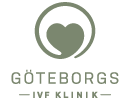How the egg-freezing process works
Ovarian stimulation
An egg-freezing cycle begins with ovarian stimulation. Follicles are encouraged to mature using injections of hormones that naturally occur in each menstrual cycle. Follicle growth is monitored by ultrasound. When enough follicles have reached the right size, a date is scheduled for egg retrieval.
Egg retrieval
During retrieval, all mature follicles (follicles) are punctured and the fluid is aspirated with a thin ultrasound-guided needle through the vaginal wall. On average, oocytes are obtained from about 80% of the mature follicles, depending on ovarian reserve, age, and individual variation. You will be told how many eggs were retrieved before you go home.
You must not drive after egg retrieval, so please arrange for someone to pick you up from the clinic. Plan to take the rest of the day off; most people can work/study the following day.
Freezing (vitrification)
The same day as the retrieval, the eggs are frozen. Only mature eggs can be frozen. You will be informed later the same day how many eggs were successfully frozen.
Withdrawal bleed
Within 4–14 days after retrieval, you will have a withdrawal bleed. It is often heavier and may last a day longer than your usual period. This is normal and is due to the hormones used during stimulation.
Follow-up / next steps
About one week after retrieval, a midwife will call to check in.
If you have a package agreement, we’ll plan when you would like to do your next cycle.
If you initially planned one cycle but wish to do another, we’ll schedule it; the second cycle is offered at a discounted price.
What are the chances of having a child?
With elective egg freezing, we generally recommend freezing 20–28 mature eggs to aim for around an 80% chance of having a child.
